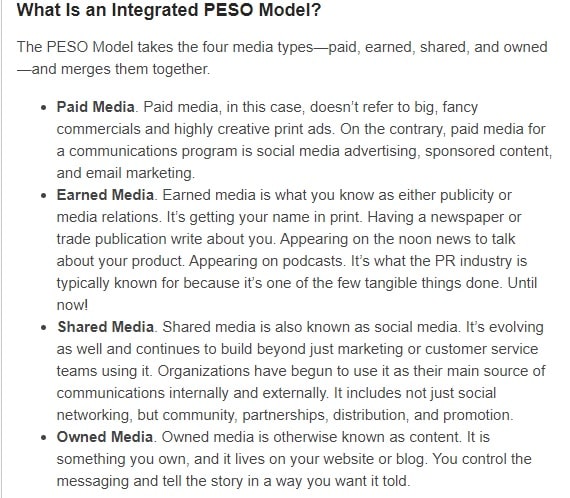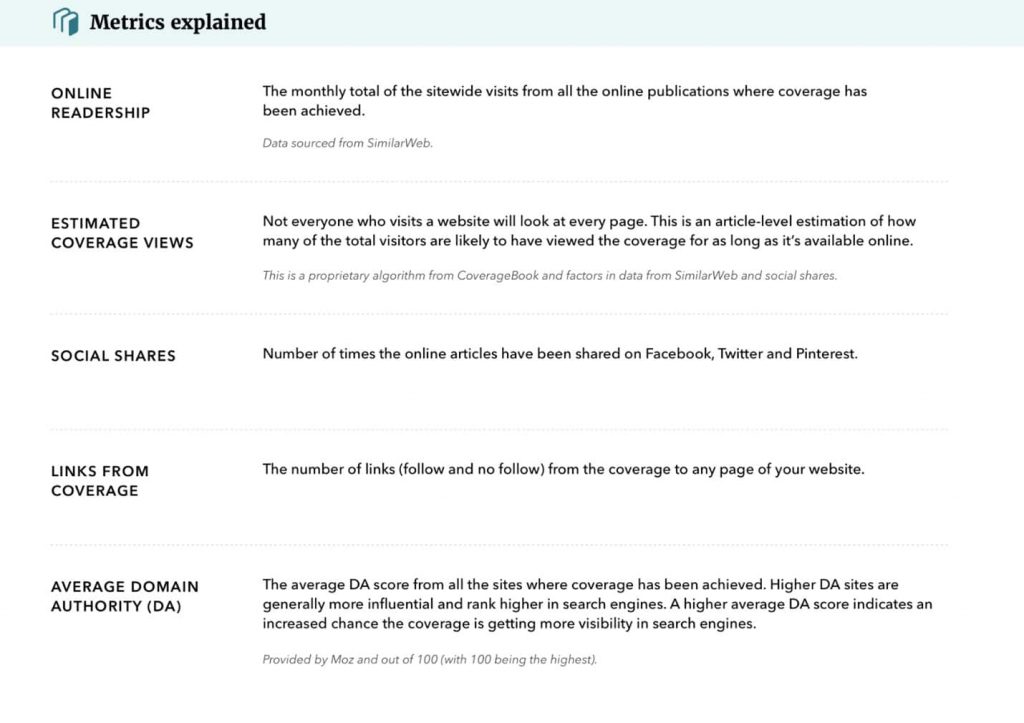What’s All the Buzz About? Public Relations 101
November 6, 2020
If you’re not a public relations (PR) or communications professional, chances are you likely clump PR in together with advertising, marketing, and event planning, thinking they are the same. And it’s OK if you do. A lot of people make this common mistake.
What exactly is PR anyway?
A critical element of your marketing mix, PR involves persuading an audience to take action, change a behavior, support a cause, or attend an event. Most of the time, this is done via an unpaid, trusted source such as the news media.
We say “most of the time” because today’s PR landscape involves a balanced blend of paid, earned, owned, and shared media known as the Integrated PESO Model.
The PR website Spin Sucks provides the following definitions:

Regardless of the medium (paid, earned, shared, or owned), PR is all about persuasion. It is about ensuring that your audience take the desired action.
The Public Relations Society of America (PRSA) says this about PR:

Graphic by Laura Frnka-Davis, APR
PR professionals are storytellers
At the end of the day, public relations professionals are professional storytellers.
Always on the hunt to find positive messages about your product or organization, they are looking for story ideas to help generate positive press.
And when news about your organization isn’t so great, PR professionals will work to come up with the best response to minimize possible damage to your reputation.
These professional storytellers usually provide one or more of the following functions:
- Corporate communications
- Crisis communications
- Executive communications
- Internal communications
- Investor communications
- Marketing communications
- Integrated marketing communications
- Media relations
- Content creation
- Reputation management
So, when might you need PR?
There is a time and place for everything, including PR. Here are some situations when bringing in the PR cavalry can be paramount to your organization’s success:
- Announcement of a new product, service, or opening a new venue – You absolutely need to call in the PR troops when you launch a new product, service, or open a new venue. Letting the public know about something new to buy, eat, try, or visit is a critical piece of your overall promotion strategy. Creating buzz, particularly with traditional media (newspapers, magazines, TV shows, etc.), is a sure way to get the word out.
- Noteworthy personnel announcements and awards – If you’ve recently named a new executive to your C-suite team or just won a major award, you may want to consider pushing out some type of announcement, mainly to trade publications specific to your industry.
- Crisis communications – If you don’t utilize the power of public relations for anything else, use it when you find your company in a crisis. Please do what you can to call on your PR expertise early on, so they have a firm understanding of what has occurred and how best to mitigate the damage. Your PR team should be able to steer you, providing you with key messages and talking points, as well as counsel on how to communicate with all of your stakeholders, not just the media.
- Support of an event – If you’re a nonprofit organization, you may be looking to sell seats to a gala or charity concert. Infusing PR into your marketing mix can give you a much-needed boost, not only with your event but also in creating awareness about your cause.
- Overall brand visibility and awareness – There is so much traffic and noise out there that it’s sometimes difficult to stay top of mind with your consumers, constituents, donors, or advocates. Consistent and ongoing PR efforts help keep your business or organization top of mind all year long.
The PR Toolbox

PR is much more than writing and distributing press releases. It’s about creating strategic communications and relationships that benefit your business or organization.
In addition to a news release, PR professionals may use one or more of the following tools to achieve their overall goals:
- Key messaging
- Fact sheets
- Pitches
- Bios
- Speeches
- Blogs
- Social media content
- Newsletters
- Brochures and other publications
All of the above require specialized writing to communicate your messaging effectively, thoughtfully, and strategically.
Measuring PR’s Effectiveness
It’s been a long-standing debate in the world of PR: how to measure its effectiveness.
Did it move the needle in terms of getting people to take the desired action? How do you tell?
When you first set out to launch a PR campaign, it’s critical to decide how and what you will measure.
Your PR objectives should state precisely what you want to achieve, how you will achieve it, and by when. You should also address who, specifically, your target audience is.
Here’s an excellent example from the Las Vegas Valley Chapter of PRSA:
“To decrease deaths from the failure to use seat belts among teen drivers by 30 percent by the calendar year 20xx.”
Having your objectives set up front will help you better measure after your campaign if you hit the mark.
Back in the day, PR professionals would use ad equivalencies, or the estimated cost of the editorial placement had it been an advertisement, to measure a PR campaign’s success. Over the years, the industry has shifted away from calculating a numeric value to media hits.
Instead, you may want to consider the following metrics, according to CoverageBook.

Patience and Perseverance Pay Off
In most cases, you won’t see PR results happen overnight. A successful campaign requires a concerted effort, tenacity, perseverance, and mental toughness.
But your efforts will eventually pay off, and you’ll one day understand why Bill Gates once said, “If I was down to my last dollar, I’d spend it on PR.”






























